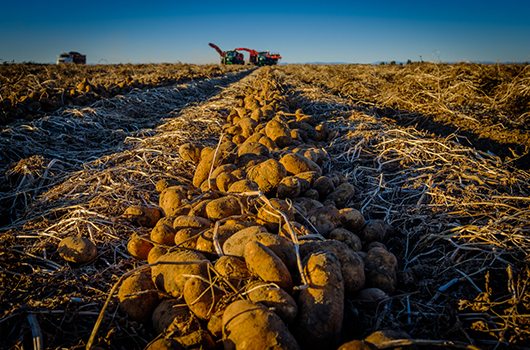There are plenty of complex topics potato growers need to understand to run a profitable business, but when it comes to outputs there are two simple measures of success growers strive for that are easy to understand – high yields and high quality.
Every decision a grower makes has an impact on those outcomes, which starts with selecting crops to plant in a given field. Developing a crop rotation plan based not only on economics, but also on agronomics, can serve as a valuable tool to growers by adding another layer of disease management to their programs.
“If you continually grow potatoes on the same ground, you’re going to get buildup of diseases that could lead to yield or quality problems,” says Curtis Rainbolt, technical service representative for BASF’s U.S. crop protection division. “You’re going to see benefits from planting a crop that isn’t a host for the same diseases potatoes are prone to.”
By regularly rotating crops, growers are also able to add diversity to their fields. “The more diversity you have in your rotation, the more you’re going to lower the disease pressure,” says Rainbolt.
Crop rotation doesn’t just prevent diseases, Rainbolt explains. “Rotating through different crops also helps to break up the lifecycle of pests like nematodes and helps fight off weeds.” This method can also balance nutrient levels in the soil.
After harvesting a potato crop, there may be a lot of nitrogen left over in the soil. Growers should consider planting a crop like wheat that has a vast root system capable of extracting the excess nitrogen.
Proper Protection
Although crop rotation helps with disease management, growers still need to be cautious when following certain crops. This year, growers planting potatoes after a dry bean crop need to be cognizant of issues with white mould.
“If you’re following dry beans with potatoes make sure you get in there with Endura fungicide early and set the foundation for white mould control,” said Rainbolt.
Another way growers can be proactive in protecting their crop is by applying a fungicide in-furrow. He recommends using Priaxor Xemium brand fungicide, especially for combating the fungus Rhizoctonia.
“Getting in there at planting with the fungicide is a good way to manage diseases,” advises Rainbolt.
It’s important for growers to think about how crop rotation could benefit their operation and which crop protection products can help them achieve their goals. Growers can find more information about crop rotation and crop protection products to aid them in disease management at www.agproducts.basf.us or by contacting their BASF representative.











